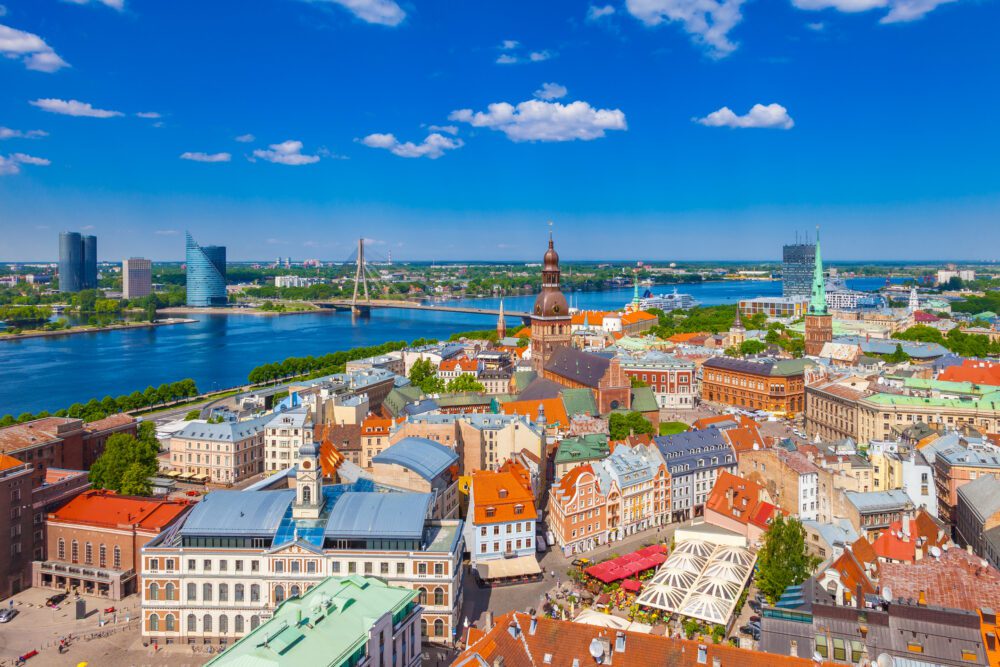
Introduction
Nestled along the banks of the Daugava River, Riga, the capital city of Latvia, is a captivating blend of history, culture, and contemporary charm. As the largest city in the Baltic states, Riga boasts a rich tapestry of architectural styles, from its medieval Old Town to its Art Nouveau masterpieces, earning it recognition as a UNESCO World Heritage Site. Beyond its picturesque streets and iconic landmarks, Riga offers visitors a dynamic cultural scene, vibrant nightlife, and a thriving culinary landscape, making it a must-visit destination for travellers seeking to uncover the hidden gems of Eastern Europe.
Riga’s history dates back over 800 years, with its strategic location along trade routes contributing to its development as a centre of commerce and culture. From its medieval origins as a trading outpost of the Hanseatic League to its golden age as a cosmopolitan hub of the Russian Empire, Riga’s past is reflected in its diverse architectural heritage and rich cultural traditions. Today, the city’s storied past is juxtaposed with its modern identity as a dynamic metropolis, where historic landmarks coexist with trendy cafes, art galleries, and music venues. Whether you’re exploring its medieval fortifications, sampling traditional Latvian cuisine, or immersing yourself in its vibrant arts scene, Riga promises an unforgettable adventure filled with discovery, intrigue, and endless possibilities.
Table of Contents
Map of the Best Things to Do in Riga
Riga Old Town
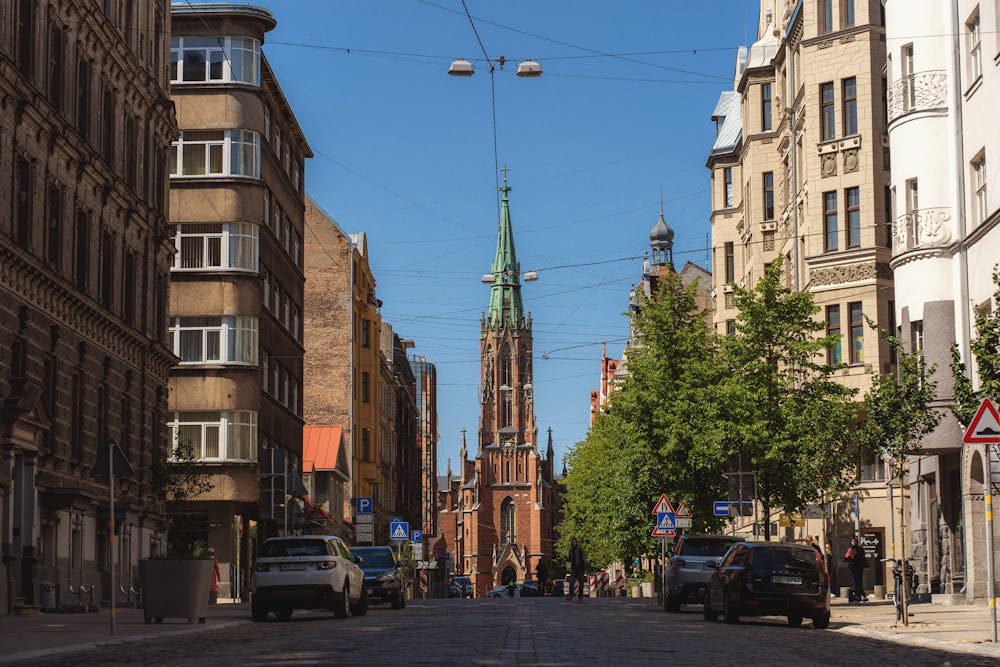
Riga’s Old Town, or Vecrīga in Latvian, stands as a living testament to the city’s medieval past and enduring charm. Founded in the early 13th century by German traders, the Old Town served as the heart of Riga’s commercial and cultural life, with its maze of cobblestone streets, historic buildings, and grand churches. Wander through the narrow alleyways and picturesque squares, and you’ll encounter architectural marvels such as the iconic Riga Cathedral, the medieval House of the Blackheads, and the imposing Riga Castle, which once served as the residence of the Livonian Order. As you explore the Old Town’s storied streets, you’ll be transported back in time to an era of knights and merchants, where every corner holds a tale waiting to be discovered.
When visiting Riga’s Old Town, be sure to wear comfortable shoes, as much of the area is pedestrian-friendly and perfect for leisurely strolls. Consider joining a guided walking tour to gain deeper insights into the history and architecture of the area, or simply set out on your own and meander through its charming streets at your own pace. Don’t miss the chance to climb the spire of St. Peter’s Church for panoramic views of the city skyline, or indulge in a meal at one of the cosy cafes or traditional restaurants tucked away in the Old Town’s hidden corners.
Town Hall Square and House of the Black Heads

The Town Hall Square, or Rātslaukums, lies at the heart of Riga’s Old Town and serves as a vibrant focal point for both locals and visitors alike. Dating back to the early 13th century, the square has been a central gathering place for centuries, hosting markets, festivals, and important civic events. Dominating the square is the iconic Riga Town Hall, a striking example of medieval architecture with its distinctive clock tower and ornate facade. Nearby, you’ll find the House of the Blackheads, a historic guildhall and cultural landmark that once served as the meeting place for a prestigious fraternity of unmarried merchants and shipowners. Destroyed during World War II and meticulously restored in the decades that followed, the House of the Blackheads now stands as a symbol of Riga’s resilience and commitment to preserving its rich cultural heritage.
When visiting the Town Hall Square and House of the Blackheads, be sure to take the time to admire the architectural details and historical significance of these iconic landmarks. Consider joining a guided tour of the House of the Blackheads to learn about its fascinating history and the role it played in Riga’s medieval society. After exploring the square and its surroundings, take a moment to relax and soak up the atmosphere at one of the nearby cafes or restaurants, where you can enjoy a meal or refreshment while taking in the sights and sounds of this bustling urban oasis.
Museum of the Occupation of Latvia
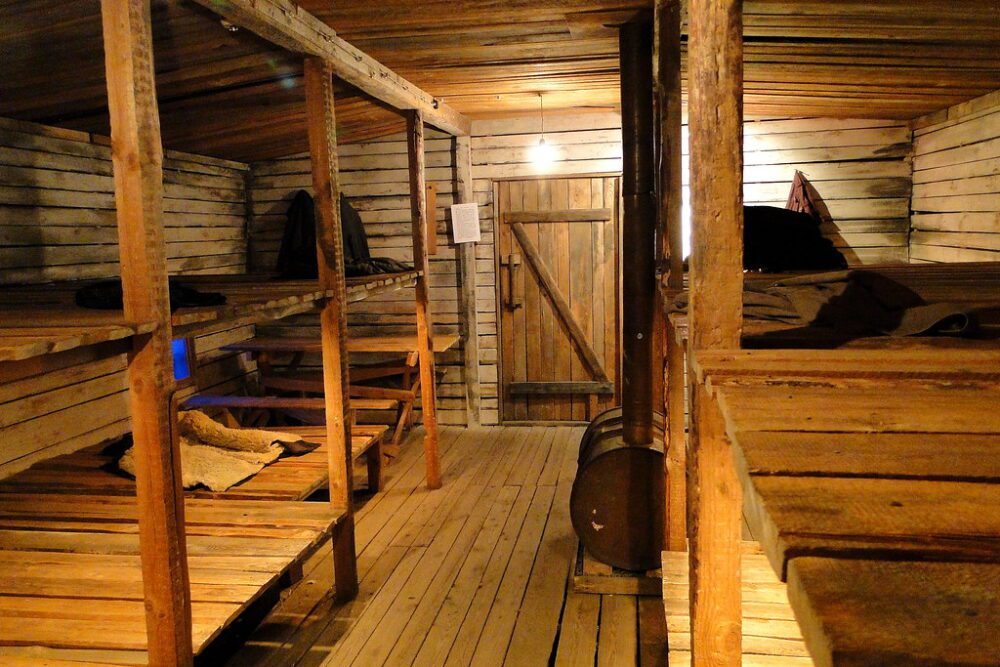
The Museum of the Occupation of Latvia offers a poignant and powerful exploration of Latvia’s tumultuous 20th-century history under Soviet and Nazi occupation. Housed in a former KGB headquarters, the museum provides a sobering reminder of the atrocities committed during this dark period, including mass deportations, forced labour camps, and political repression. Through its extensive collection of artefacts, photographs, and personal testimonies, the museum sheds light on the experiences of Latvians living under foreign rule and commemorates the resilience and bravery of those who fought for freedom and independence.
When planning a visit to the Museum of the Occupation of Latvia, be prepared for an emotionally challenging experience that may leave a lasting impact. Take your time to explore the museum’s exhibits thoughtfully, allowing yourself to absorb the harrowing stories and historical context presented within its walls. Consider joining a guided tour to gain deeper insights into the museum’s collections and the events that shaped Latvia’s past, or explore at your own pace using the provided audio guides. Before you leave, take a moment to reflect in the museum’s memorial room, where you can pay tribute to the victims of oppression and honour the sacrifices made in the struggle for freedom.
St Peter’s Cathedral
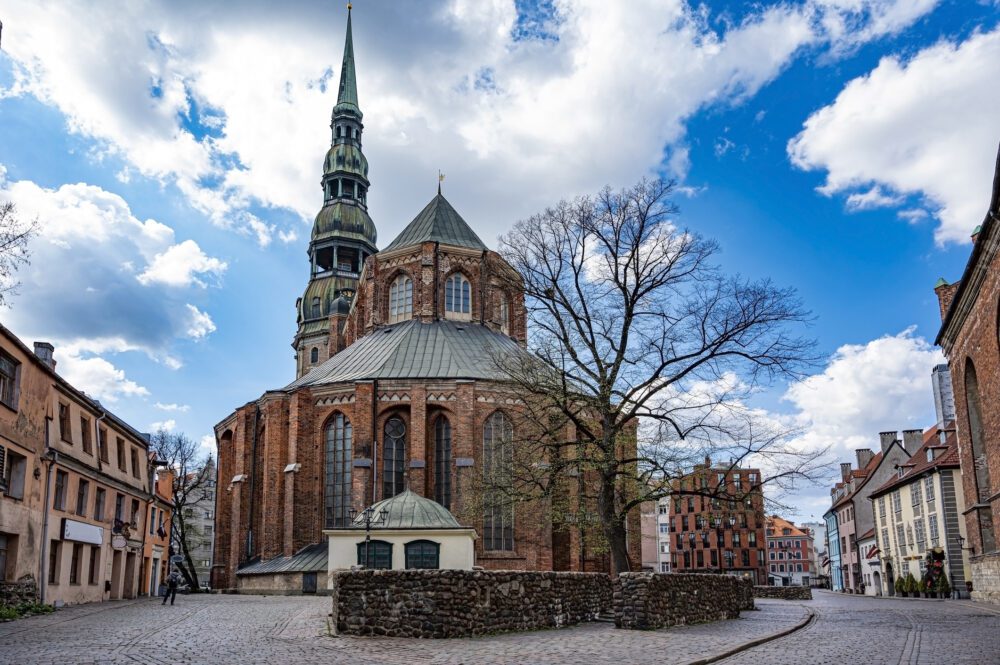
St. Peter’s Cathedral, or Svētā Pētera baznīca in Latvian, stands as a majestic symbol of faith and architectural splendour in the heart of Riga’s Old Town. Dating back to the 13th century, the cathedral is one of the city’s oldest and most cherished landmarks, with its towering spire dominating the skyline and commanding attention from near and far. Originally built as a Roman Catholic church, St. Peter’s Cathedral has undergone numerous renovations and reconstructions over the centuries, reflecting a blend of architectural styles from Romanesque to Gothic to Baroque. Today, visitors can admire its exquisite interiors, including ornate altars, intricately carved wooden furnishings, and stunning stained glass windows, as well as ascend its spire for breathtaking views of the city below.
When visiting St. Peter’s Cathedral, be sure to check the opening hours and any admission fees, as they may vary depending on the season and whether there are any special events or services taking place. Consider joining a guided tour of the cathedral to learn about its history, architecture, and significance in Latvian culture and religion. Don’t miss the chance to climb the cathedral’s spire for panoramic views of Riga’s Old Town and beyond, which offer a unique perspective on the city’s historic landmarks and scenic beauty.
Riga Cathedral
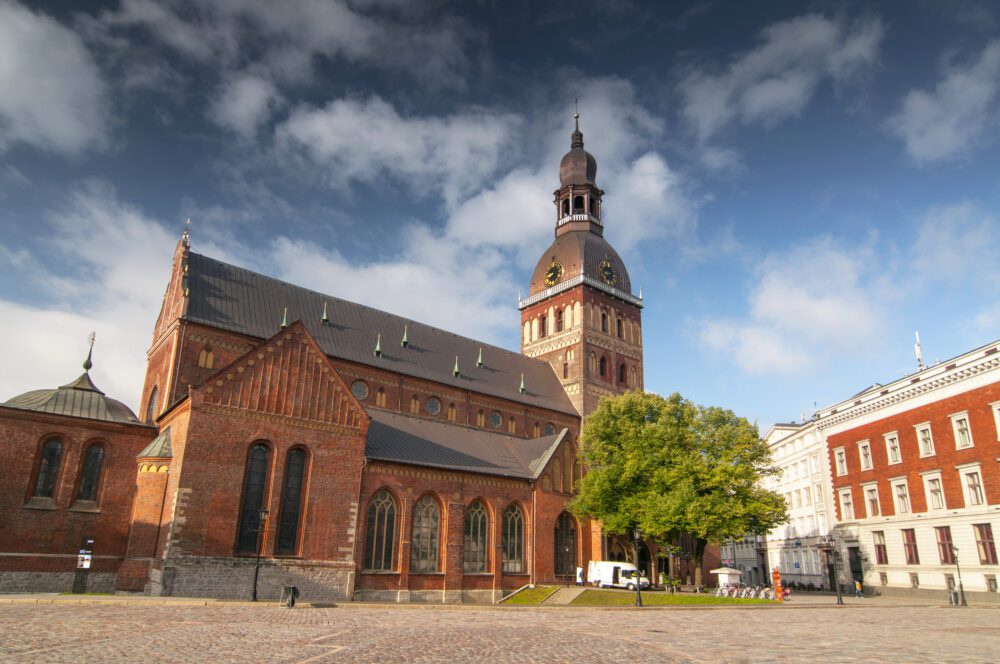
Riga Cathedral, also known as the Rīgas Doms in Latvian, is a historic landmark and architectural masterpiece that holds a special place in the heart of the Latvian capital. Founded in the early 13th century, the cathedral has witnessed centuries of tumultuous history, serving as a symbol of faith, resilience, and cultural identity for the people of Riga. Its imposing facade, adorned with intricate stone carvings and towering spires, reflects a blend of architectural styles, including Romanesque, Gothic, and Baroque influences. Inside, visitors can marvel at its grand interiors, which feature ornate altars, majestic organ pipes, and exquisite works of art, including the famous Riga Dom Cross, a symbol of the city’s Christian heritage.
When planning a visit to Riga Cathedral, be sure to check the opening hours and any admission fees, as they may vary depending on the season and whether there are any special events or services taking place. Consider joining a guided tour of the cathedral to gain deeper insights into its history, architecture, and significance in Latvian culture and religion. Don’t miss the chance to climb to the top of the cathedral’s towers for panoramic views of Riga’s skyline and the surrounding Old Town, which offer a breathtaking perspective on the city’s historic landmarks and scenic beauty. Before you leave, take a moment to explore the cathedral’s peaceful courtyard and surrounding grounds, where you can admire its picturesque exterior and soak up the serene ambience of this sacred sanctuary.
Three Brothers

The Three Brothers, a trio of historic buildings nestled in Riga’s Old Town, offer a glimpse into the city’s medieval past and architectural evolution. Dating back to the late Middle Ages, these iconic structures stand as a testament to Riga’s rich cultural heritage and enduring charm. The oldest of the three buildings, located at 17 Maza Pils Street, is believed to have been built in the 15th century and is renowned for its distinctive Gothic architecture and ornate facade. The adjacent buildings, located at 19 and 21 Maza Pils Street, feature a blend of architectural styles, including Gothic, Renaissance, and Baroque elements, reflecting the city’s changing tastes and influences over the centuries.
When exploring the Three Brothers, be sure to take your time to admire the intricate details and historical significance of these iconic landmarks. Consider joining a guided walking tour of Riga’s Old Town, where knowledgeable guides can provide fascinating insights into the history and architecture of the Three Brothers and other nearby attractions. Don’t miss the opportunity to capture photographs of these picturesque buildings, which serve as a perfect backdrop for capturing the timeless beauty of Riga’s historic centre.
Swedish Gate
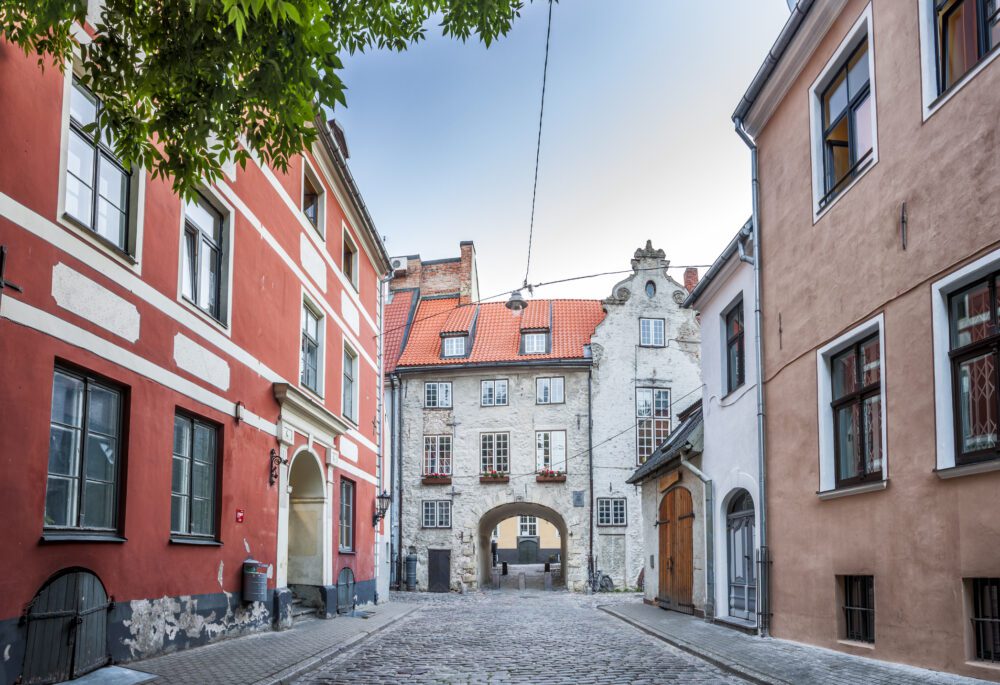
The Swedish Gate, a well-preserved relic of Riga’s medieval fortifications, stands as a poignant reminder of the city’s tumultuous past and strategic importance. Built in 1698 during Sweden’s occupation of Riga, the gate served as one of the main entrances to the city’s defensive walls, allowing access to the bustling merchant district and providing protection against invading forces. Today, the Swedish Gate is one of the few remaining vestiges of Riga’s medieval fortifications and is cherished as a symbol of the city’s resilience and enduring spirit.
When visiting the Swedish Gate, take a moment to appreciate its architectural significance and historical context. While the gate itself is relatively small, its intricate design and imposing presence offer a glimpse into the city’s medieval past and the challenges it faced during periods of conflict and conquest. Consider joining a guided walking tour of Riga’s Old Town, where knowledgeable guides can provide insights into the history and significance of the Swedish Gate, as well as other nearby landmarks and attractions. Don’t miss the opportunity to walk through the gate’s narrow passageway, where you can imagine yourself stepping back in time to an era of knights, merchants, and medieval intrigue.
Latvian National Opera
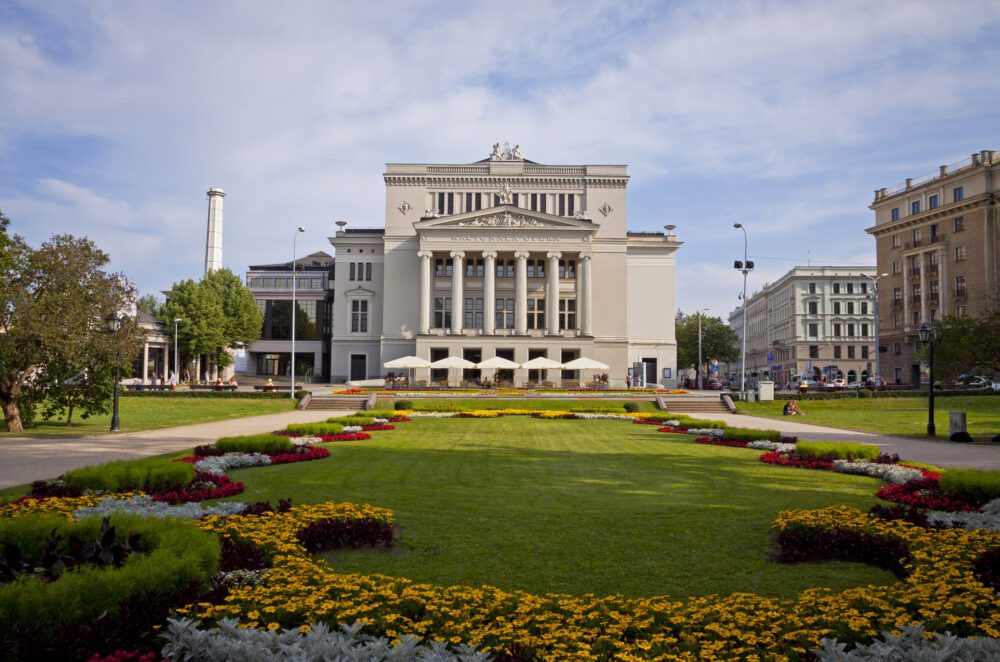
The Latvian National Opera, a cultural jewel in the heart of Riga, stands as a testament to Latvia’s rich artistic heritage and commitment to excellence in the performing arts. Founded in 1918, the opera house has been a focal point of Latvian culture for over a century, showcasing world-class performances of opera, ballet, and classical music. Its majestic neoclassical facade and opulent interiors, adorned with stunning chandeliers, intricate frescoes, and plush velvet seating, create a grand setting for unforgettable theatrical experiences. Whether attending a stirring opera by Latvian composers such as Jānis Mediņš or enjoying a dazzling ballet performance choreographed by Rudi van Dantzig, visitors to the Latvian National Opera are treated to a feast for the senses that celebrates the beauty and power of the performing arts.
When planning a visit to the Latvian National Opera, be sure to check the schedule of performances in advance and book tickets early to secure the best seats for your chosen show. Consider arriving early to explore the opera house’s elegant foyer and enjoy a pre-show drink or snack at the onsite cafe, which offers a selection of refreshments and light fare. Don’t forget to dress appropriately for the occasion, as attending a performance at the Latvian National Opera is a special occasion that calls for formal or semi-formal attire.
Freedom Monument
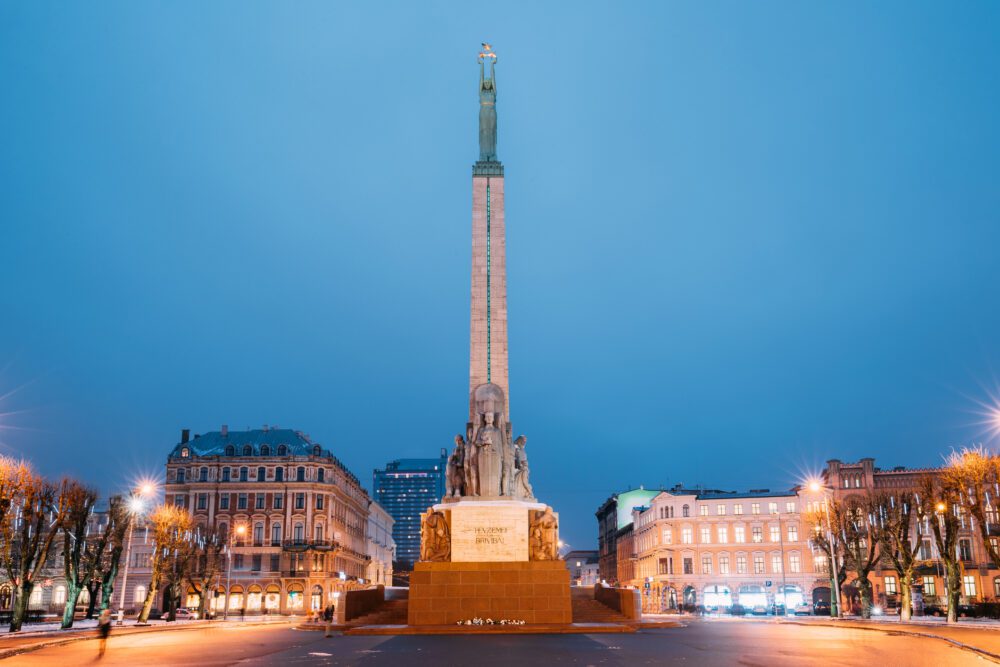
The Freedom Monument, an iconic symbol of Latvia’s independence and national identity, stands proudly in the heart of Riga’s city centre, overlooking the bustling thoroughfare of Brīvības iela (Freedom Street). Erected in 1935 to commemorate Latvia’s newfound freedom following the end of World War I, the monument serves as a poignant reminder of the sacrifices made by the Latvian people in their struggle for independence. Designed by sculptor Kārlis Zāle, the monument features a striking central figure of Liberty holding aloft three stars, symbolizing the unity of Latvia’s historical regions – Kurzeme, Vidzeme, and Latgale. Surrounding the central figure are bas-reliefs depicting scenes from Latvia’s history, including its ancient roots, medieval heritage, and modern aspirations for freedom and democracy.
Visitors to the Freedom Monument can pay their respects to Latvia’s fallen heroes and take in the monument’s powerful symbolism, which represents the country’s enduring commitment to liberty, democracy, and human rights. When visiting the monument, be mindful of its significance to the Latvian people and approach it with respect and reverence. Consider joining a guided walking tour of Riga’s city centre, where knowledgeable guides can provide insights into the history and significance of the Freedom Monument, as well as other nearby landmarks and attractions. Don’t miss the opportunity to capture photographs of the monument against the backdrop of Riga’s skyline, which offers a timeless image of Latvia’s commitment to freedom and democracy.
Nativity of Christ Cathedral
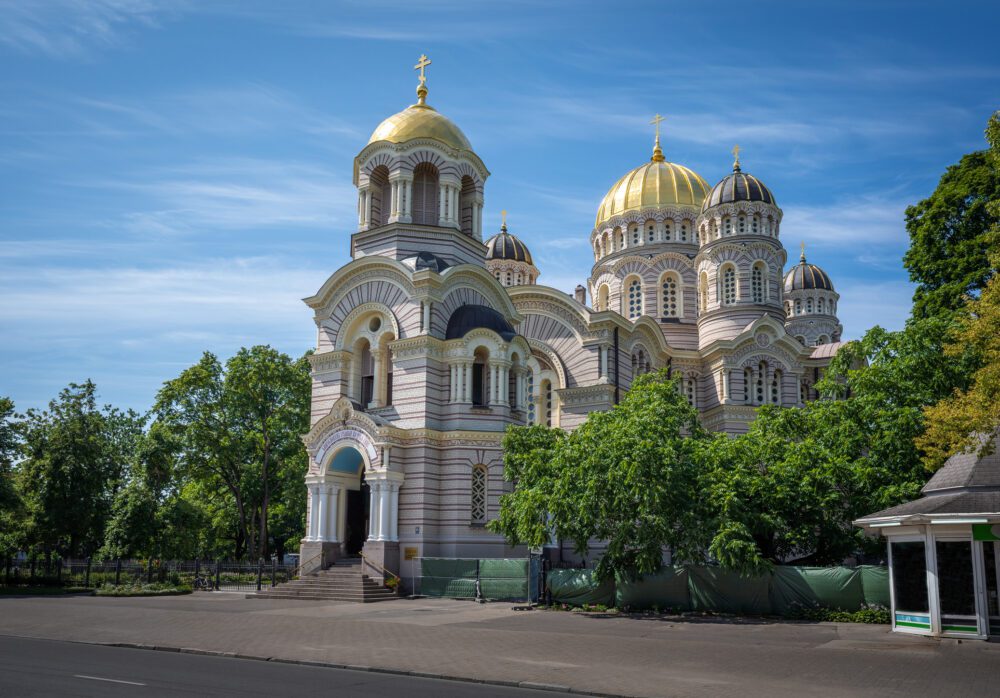
The Nativity of Christ Cathedral, a magnificent Orthodox church located in the heart of Riga, stands as a testament to Latvia’s diverse religious heritage and architectural splendour. Constructed in the late 19th century, the cathedral is renowned for its striking Byzantine Revival style, characterized by its distinctive domes, ornate facade, and intricate iconography. Originally built to serve Riga’s Orthodox community, the cathedral has since become a cherished symbol of Latvia’s cultural and religious diversity, welcoming visitors of all backgrounds to admire its beauty and significance. Inside, the cathedral’s interior is adorned with stunning frescoes, gilded iconostases, and intricate mosaics, creating a sense of awe and reverence that captivates visitors and worshippers alike.
When visiting the Nativity of Christ Cathedral, take the time to explore its magnificent interiors and learn about its rich history and significance. Consider joining a guided tour of the cathedral, where knowledgeable guides can provide insights into its architecture, artwork, and religious traditions. Don’t miss the chance to attend a worship service or religious ceremony, where you can experience the cathedral’s sacred atmosphere and witness the Orthodox faith in practice.
Riga Central Market
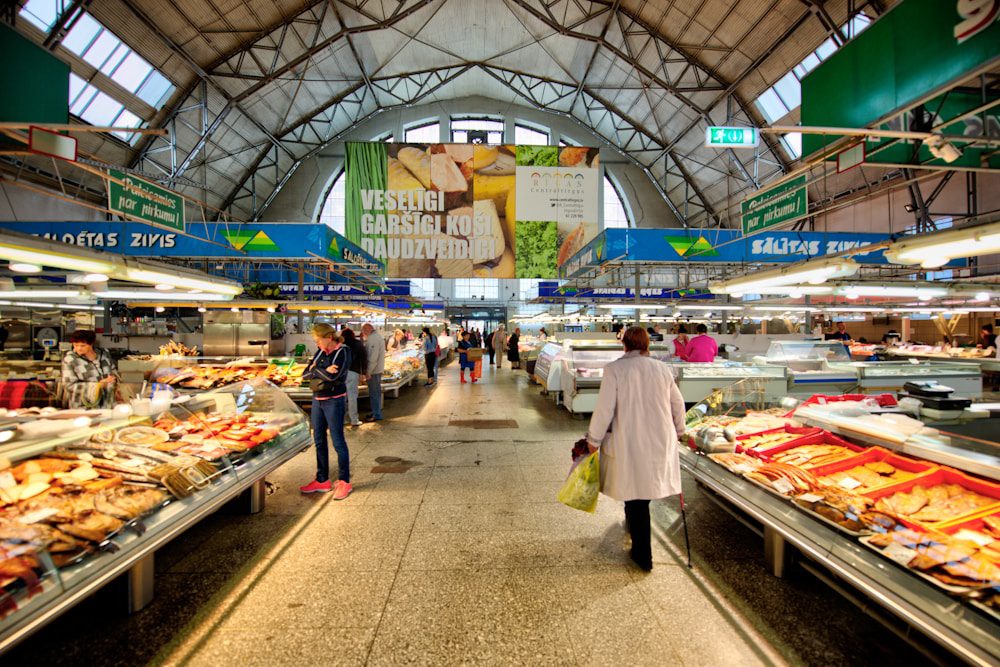
The Riga Central Market, one of Europe’s largest and most vibrant marketplaces, is a bustling hub of activity where locals and visitors alike gather to shop, dine, and immerse themselves in the sights, sounds, and flavours of Latvia. Established in the 1930s, the market occupies five vast pavilions housed in former Zeppelin airship hangars, creating a unique architectural setting that reflects Riga’s industrial past. Today, the market offers a diverse array of goods and produce, including fresh fruits and vegetables, locally sourced meats and cheeses, artisanal breads and pastries, and traditional Latvian crafts and souvenirs. Wander through the maze of stalls and corridors, and you’ll encounter a vibrant tapestry of colours, aromas, and flavours that capture the essence of Latvian cuisine and culture.
When visiting the Riga Central Market, be prepared for a sensory overload and a feast for the senses. Consider arriving early in the morning to experience the market at its liveliest, when vendors are setting up their stalls and locals are doing their daily shopping. Don’t be afraid to haggle with vendors and sample the goods before making a purchase, as this is all part of the market experience. Be sure to explore all five pavilions to discover hidden gems and unique finds, and don’t miss the chance to try traditional Latvian dishes such as piragi (stuffed pastries), grey peas with bacon, or smoked fish from the market’s seafood section.
Art Nouveau Museum
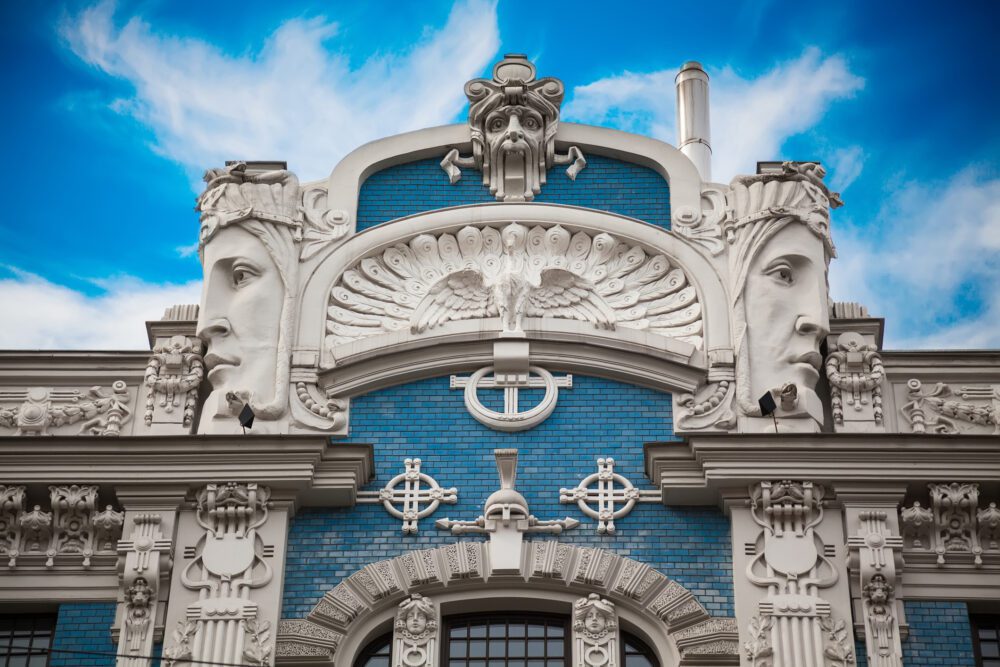
The Art Nouveau Museum in Riga offers visitors a captivating journey into the world of one of the city’s most distinctive architectural styles. Housed in a meticulously restored Art Nouveau building, the museum provides a glimpse into Riga’s golden age of architecture, when the city experienced a flourishing of creativity and innovation in the late 19th and early 20th centuries. Designed by Latvian architect Konstantīns Pēkšēns, the building itself is a masterpiece of Art Nouveau design, with its elaborate facade adorned with intricate floral motifs, sinuous lines, and ornate sculptures. Inside the museum, visitors can explore a series of beautifully preserved apartments, each meticulously furnished and decorated to recreate the opulent interiors of Riga’s Art Nouveau era.
When visiting the Art Nouveau Museum, be sure to take advantage of the guided tours offered by knowledgeable staff members, who can provide valuable insights into the history, architecture, and decorative arts of the Art Nouveau movement in Riga. Consider joining a themed tour focusing on specific aspects of Art Nouveau design, such as furniture, textiles, or decorative arts, to gain a deeper appreciation for the intricacies of this influential artistic style. Don’t miss the opportunity to explore the museum’s temporary exhibitions and special events, which offer a fresh perspective on Riga’s Art Nouveau heritage and its enduring relevance in contemporary design.
KGB Building
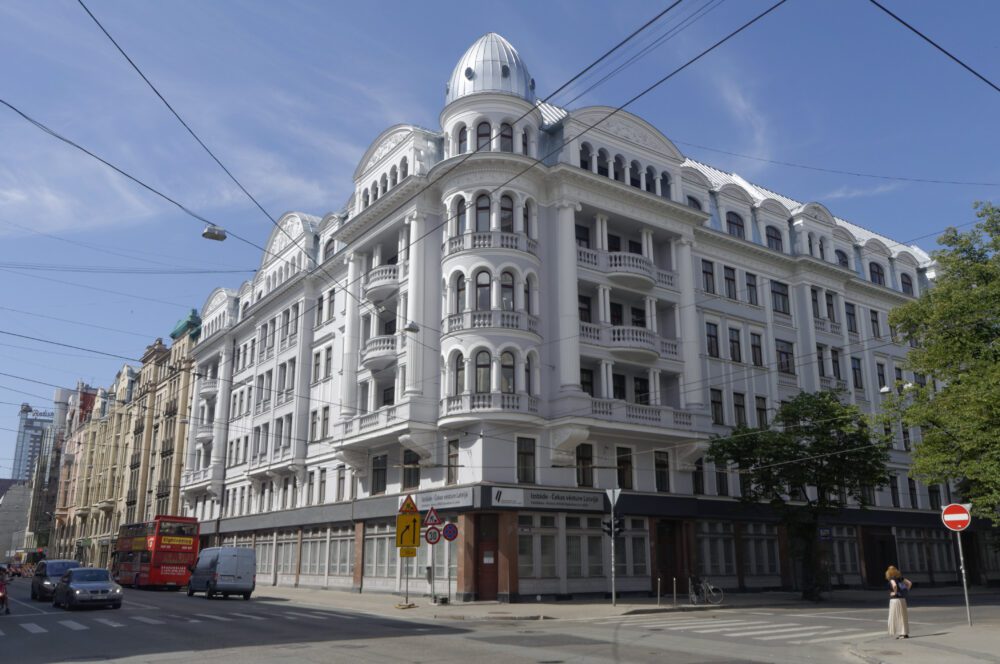
The KGB Building, also known as the Corner House, serves as a chilling reminder of Latvia’s dark past under Soviet occupation. Located in the heart of Riga, this nondescript building was once the headquarters of the Soviet secret police, the KGB, where countless Latvians were interrogated, tortured, and imprisoned for their political beliefs. Today, the building has been transformed into a museum dedicated to preserving the memory of those who suffered under Soviet repression and documenting the atrocities committed during this tumultuous period of Latvian history. Visitors to the KGB Museum can explore the building’s grim interior, including its interrogation rooms, prison cells, and offices, where they can learn about the methods used by the KGB to silence dissent and suppress opposition.
When visiting the KGB Museum, prepare yourself for a sobering and emotionally challenging experience. Be mindful of the sensitive nature of the museum’s exhibits and approach them with respect and reverence. Consider joining a guided tour of the museum, where knowledgeable guides can provide insights into the history and significance of the KGB Building and the events that took place within its walls. Don’t miss the opportunity to listen to the firsthand accounts of survivors and witnesses, whose stories provide a powerful testament to the resilience of the human spirit in the face of oppression.
Riga Motor Museum
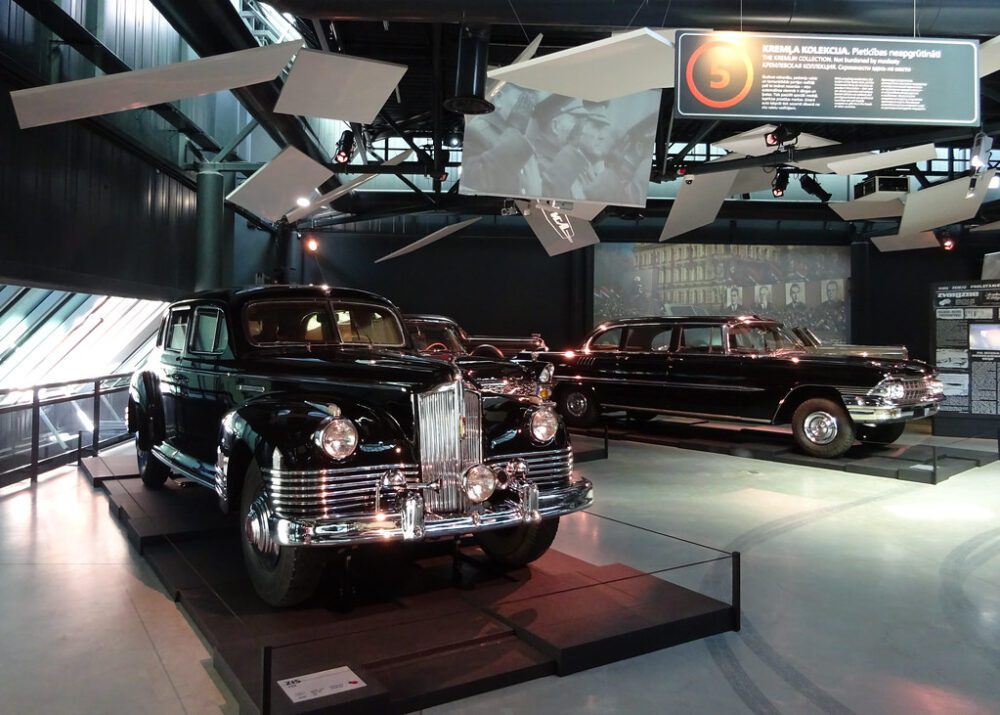
The Riga Motor Museum offers visitors a thrilling journey through the history of automotive innovation and engineering excellence. Founded in 1989, the museum boasts an extensive collection of vintage cars, motorcycles, and other vehicles, spanning over a century of automotive history. From iconic classics such as the Ford Model T and the Volkswagen Beetle to rare and exotic sports cars like the Ferrari Testarossa and the Lamborghini Countach, the museum showcases the evolution of automotive design and technology with over 100 unique vehicles on display. Visitors can explore the museum’s interactive exhibits, which delve into the stories behind the cars and the people who drove them, as well as learn about the key milestones and innovations that have shaped the automotive industry over the years.
When planning a visit to the Riga Motor Museum, consider allocating plenty of time to explore its extensive collection and interactive displays. Be sure to check the museum’s website for information on opening hours, ticket prices, and any special exhibitions or events taking place during your visit. Consider joining a guided tour of the museum, where knowledgeable guides can provide fascinating insights into the history and significance of the vehicles on display, as well as offer behind-the-scenes access to the museum’s restoration workshops and storage facilities. Don’t miss the opportunity to visit the museum’s gift shop, where you can purchase souvenirs, books, and memorabilia inspired by the world of automotive history.
Latvian Ethnographic Open Air Musem
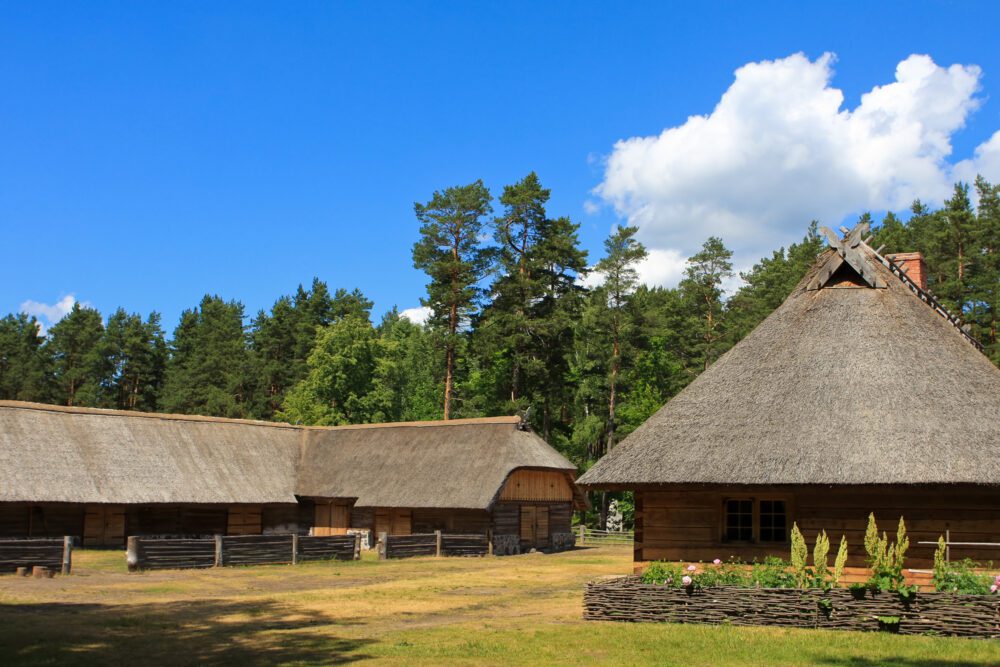
The Latvian Ethnographic Open Air Museum, nestled in a picturesque forested area on the outskirts of Riga, offers visitors a captivating glimpse into Latvia’s rural heritage and traditional way of life. Founded in 1924, the museum spans over 87 hectares and features over 100 authentic buildings, including farmsteads, windmills, churches, and craftsmen’s workshops, meticulously reconstructed to showcase different regions and periods of Latvian history. As you wander through the museum’s scenic grounds, you’ll encounter costumed guides demonstrating traditional crafts and activities, such as weaving, pottery-making, and bread-baking, providing a hands-on experience that brings Latvia’s cultural heritage to life.
When planning a visit to the Latvian Ethnographic Open Air Museum, consider setting aside several hours to explore its expansive grounds and immerse yourself in the sights and sounds of Latvian rural life. Be sure to wear comfortable walking shoes, as much of the museum is outdoors and may involve uneven terrain. Consider joining a guided tour of the museum, where knowledgeable guides can provide insights into the history, architecture, and cultural significance of the buildings on display, as well as offer fascinating anecdotes and stories about life in rural Latvia. Don’t miss the opportunity to sample traditional Latvian cuisine at the museum’s onsite restaurant, where you can enjoy hearty dishes such as pīrāgi (stuffed pastries), skābeņu zupa (sorrel soup), and speķa pīrāgi (bacon pastries), made using time-honoured recipes and locally sourced ingredients.
Conclusion
Riga stands as a city of endless wonders, where history, culture, and modernity intertwine to create a tapestry of experiences that captivate and inspire. From exploring the cobblestone streets of the Old Town and admiring the architectural marvels of the Art Nouveau district to delving into the poignant history of the KGB Museum and savouring the flavours of traditional Latvian cuisine at the Riga Central Market, the Latvian capital offers something for every traveller’s taste and interest. Whether you’re drawn to its rich cultural heritage, vibrant arts scene, or picturesque natural landscapes, Riga welcomes you with open arms and invites you to uncover the hidden gems and treasures that await around every corner.
As you bid farewell to Riga, may the memories of its enchanting streets, majestic landmarks, and warm hospitality linger in your heart, inspiring you to return and explore further. Whether you’ve marvelled at its iconic landmarks, immersed yourself in its cultural delights, or simply enjoyed the simple pleasures of wandering its streets, Riga leaves an indelible impression on all who visit, beckoning you to discover more and embrace the spirit of adventure that awaits in this charming Baltic gem.
